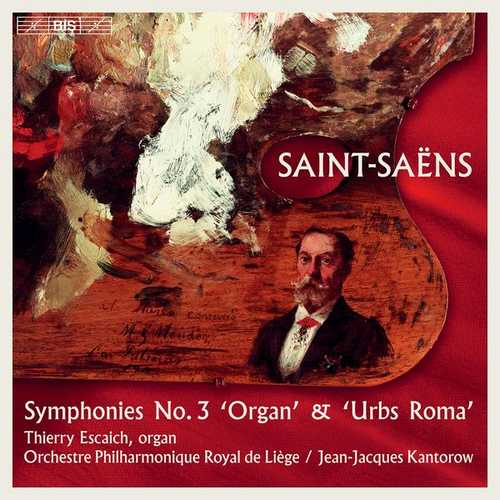

Composer: Charles Camille Saint-Saëns
Performer: Thierry Escaich
Orchestra: Orchestre Philharmonique de Liège
Conductor: Jean-Jacques Kantorow
Format: FLAC (tracks)
Label: BIS
Catalogue: BIS2470
Release: 2021
Size: 1.2 GB
Recovery: +3%
Scan: yes
Symphonie en fa Urbs Roma
01. I. Largo – Allegro
02. II. Molto vivace
03. III. Moderato, assai serioso
04. IV. Poco allegretto – Andante con moto
Symphony No. 3 in C minor, Op. 78 ‘Organ Symphony’
05. I. Adagio – Allegro moderato – Poco adagio
06. IIa. Allegro moderato – Presto
07. IIb. Maestoso – Allegro
The present album is the second of two recorded by the Orchestre Philharmonique Royal de Liège and Jean-Jacques Kantorow to commemorate the centenary of the death of Camille Saint-Saëns. On the first instalment the team offered us deeply impressive performances in stunning sound of the composer’s First and Second Symphonies and the unnumbered Symphony in A major, but now the time has come for Saint-Saëns’ crowning glory in the symphonic genre: his Symphony No. 3 in C minor, generally known as the “Organ Symphony”. The work was composed in 1886, and Saint-Saëns had planned to dedicate it to Liszt but the latter’s death the same year caused the dedication in the published score to be modified to “in memory of Franz Liszt”. It is written for a larger orchestra than his previous symphonies, with the unusual addition of a piano and an organ – the two instruments that Liszt (and Saint-Saëns himself) favoured. Without being a virtuoso vehicle, the organ part is central to the work – especially in the grandiose ending – and it is here performed by the renowned organist Thierry Escaich, playing the great organ of Liège’s Salle Philharmonique.
Here the symphony is preceded by the “Urbs Roma” Symphony, composed in 1856 by a 21-year-old Saint-Saëns. It was written for a competition, and its title – “the city of Rome” – was one of the subjects prescribed by the organisers. In the absence of an explanation by the composer, it is unclear how the music relates to the subject. Another enigma is why Saint-Saëns omitted the symphony from his catalogue of works, even though it actually won him a first prize. In consequence, “Urbs Roma” remained unpublished until 1974 and is rarely heard even today.



